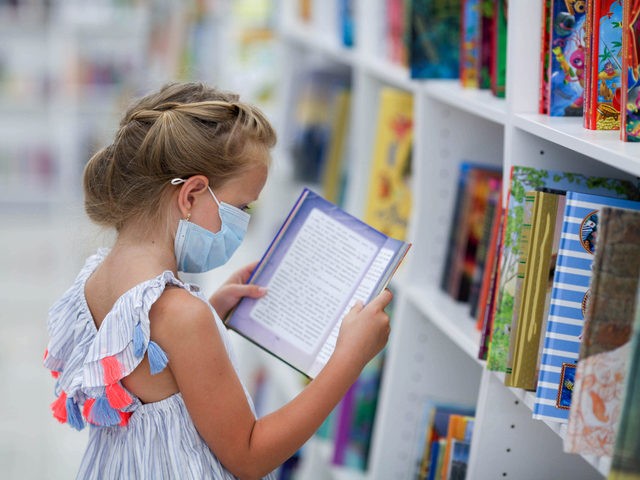More than one-in-three students who started school during coronavirus pandemic restrictions are reading far below grade level and have little chance of recovering by the end of the school year.
According to a study by Amplify, a curriculum and assessment group, students in kindergarten through third grade are struggling with reading to such a degree that many require “intensive” intervention in order to recover from losses due to the pandemic.
The study used data derived from Dynamic Indicators of Basic Early Literacy Skills (DIBELS) assessments, a common diagnostic test that looks for indicators such as phonemic awareness, comprehension, alphabetic principle, and fluency. It compiled data from more than 1,300 schools in 37 states from 2019 to 2022.
While there has been some improvement from the 2020-2021 school year, the 2021-2022 school year, students are still well below pre-pandemic reading readiness. The results also show that earlier grade levels have the students least prepared relative to their grade level’s benchmark standards.
Only 47 percent of kindergartners are reading at grade level now compared to 55 percent pre-pandemic. That number can be coupled with the fact that 37 percent of kindergartners are considered “at-risk readers” who read well below their grade level, compared to only 29 percent pre-pandemic. “At-risk readers” are considered to only have a 20 percent chance of making up the gap by the end of the school year.
The story is similar all the way through fifth grade, but reading readiness does increase with the higher grade levels.
For example, while only 48 percent of first-graders are reading at grade level (compared to 58 percent pre-pandemic), 57 percent of fifth-graders are reading at grade level (compared to 58 percent pre-pandemic). Similarly, while 37 percent of first-graders are considered to be “at-risk” (compared to 29 percent pre-pandemic), 29 percent of fifth-graders are considered the same (compared to 28 percent pre-pandemic).
However, students who are considered “at-risk” at higher grades have dramatically more ground to make up than students at lower grade levels. “When students start getting to grades 3 and 4, and 5, those compounding effects will really be prevalent, and it takes more time and more resources to actually close the gap,” Amplify Chief Academic Officer for Elementary Humanities Susan Lambert said, according to Education Week.
The dismal literacy numbers — which are in large part a result of keeping schools closed and children masked — also trend by race, which might more accurately be portrayed as trending by location, as Democrat-run cities held on the longest with draconian and disastrous pandemic restrictions on children.
Indeed, while white students were more likely to return to in-person learning earlier on in the pandemic, posting a reading preparedness pre/post-pandemic drop from 65 percent to 58 percent, black students’ reading scores dropped from 51 percent to 37 percent, and Hispanic students dropped from 54 percent to 42 percent over the same timeframe.
School districts with large student populations, a significant percentage of whom are minorities, like Chicago, Los Angeles, and New York City, are some of the school districts that fought to drop pandemic restrictions until 2022, often using the power of teachers’ unions to keep schools shuttered and children falling further behind.
“There’s one group [reading] below benchmark—think of them as … ‘bubble kids,’ you know, the ones who probably need strategic support that could be offered within the classroom, but don’t need to be pulled out for something more intensive,” Amplify Director of Data Science Paul Gazzerro said. “And then [there are] kids who are least likely to be successful at the end of the year, these kids we’re identifying as at risk.”
Along with educational development, pandemic restrictions have caused a severe spike in mental health issues for children.
Pediatricians have known from early on in the pandemic that the lack of personal interaction and ability to see the faces of others have driven literacy and speech down dramatically.
Indeed, in the middle of 2020, the American Academy of Pediatrics urged school officials to open schools for in-person learning, warning of spiking depression, anxiety, and suicidal ideation among children — mostly to no avail.
Even U.S. Surgeon General Vivek Murthy pointed out that “depression and anxiety symptoms for youth around the world had doubled during the pandemic and that clinical data also revealed that ‘suspected suicide attempts were 51% higher for adolescent girls and 4% higher for adolescent boys compared to the same time period in early 2019.’”
“‘Pandemic-related measures … made it harder to recognize signs of child abuse, mental health concerns, and other challenges’ children were facing given the ‘reduced in-person interactions among children, friends, social supports, and professionals such as teachers [and] school counselors,’” Murthy’s study stated.
Breccan F. Thies is a reporter for Breitbart News. You can follow him on Twitter @BreccanFThies.

COMMENTS
Please let us know if you're having issues with commenting.